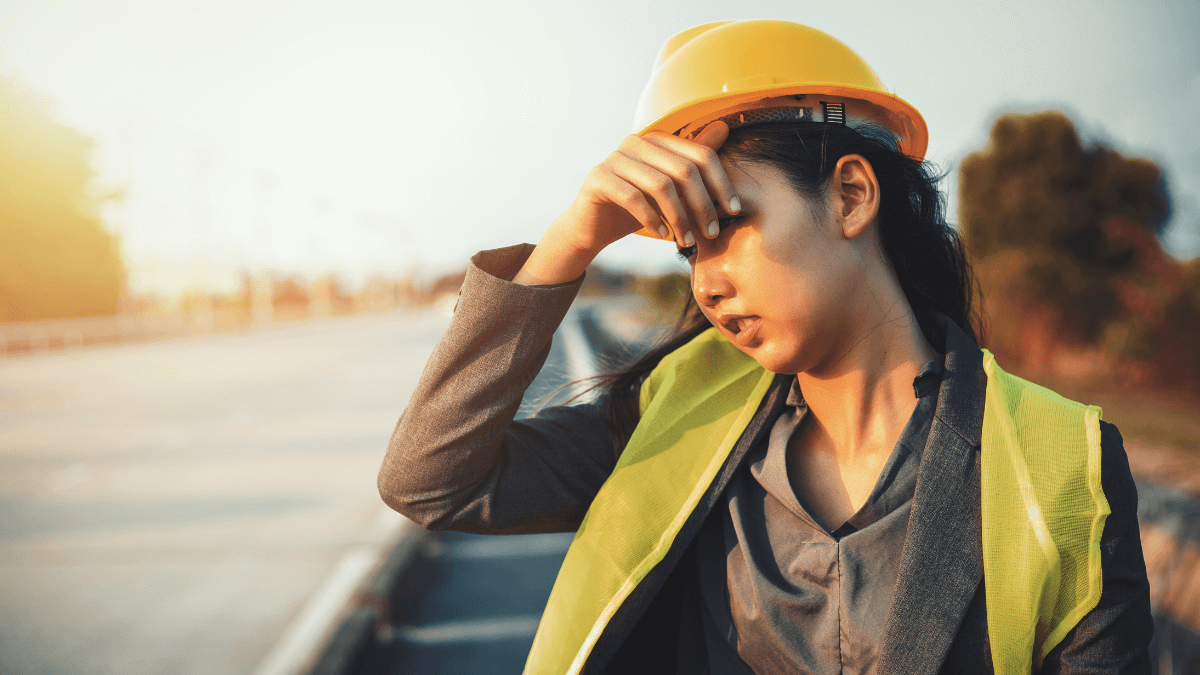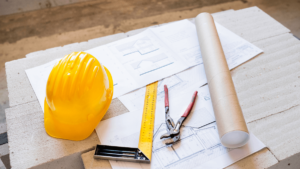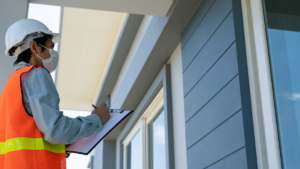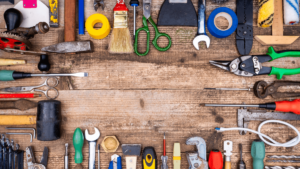Heat stress is a serious issue on a construction site, especially as we approach the hottest months of the year.
Addressing it appropriately is becoming increasingly important, seeing as the average temperature has gone up by a whole 1.9° F since the early industrial times, with the rise escalating since 1975.
That’s why we’ve rounded up some tips to help you protect your construction team from the harmful effects of the scorching heat.
In this article...
Spread Awareness About Heat Dangers
Some workers are used to the heat and take it for granted, but as a manager, you should not.
Alarmingly, one study found that if the temperature of the air in a certain area is 89°F, then a construction site in that location can reach temperatures as high as 113°F.
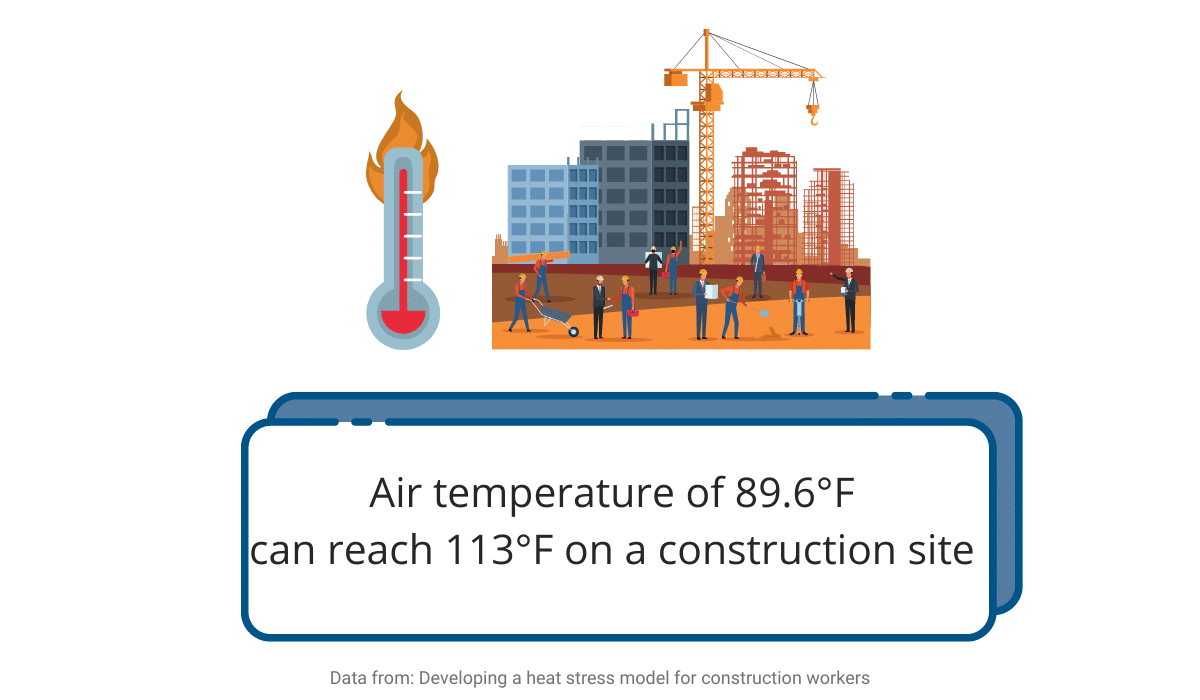
It’s your responsibility as a manager to educate first yourself and then your employees on heat-related dangers during the busy summer season.
Companies should focus on prevention, as attested by the Texas-based KWA Company.
After their subcontractor passed away due to a heat stroke when nobody recognized the severity of his symptoms, they decided to dedicate more efforts to prevention.
According to Holly Webster, the company’s director of administration:
“One of the biggest lessons we’ve learned as an organization is that one-time, single-event training just isn’t sufficient.”
In addition to covering the topic at biannual and quarterly meetings, they revisit it at least once a month in the summer.
It’s mandatory even for workers not on the construction site so that everyone learns to recognize the signs.
Continuity is vital, so another good idea is to display informative posters.
Some great potential topics include the importance of hydration and ways to prevent heat-related illnesses by the National Institute for Occupational Safety and Health (NIOSH), or protecting workers from heat stress by the Occupational Safety and Health Administration (OSHA).
They should be in a prominent place for everyone to see, somewhere where people naturally congregate, e.g., next to the water cooler or the fridge.
Learn to Recognize the Signs of Heat Stress
Heat stress includes a number of conditions that range from mild to life-threatening.
Heat rash, sunburn, and heat cramps are among the mild ones.
Heat rash presents as a cluster of small, pimple-like blisters, while blisters in a sunburn are bigger and more painful.
Both can typically be treated by staying out of the sun and applying powder (rash) or cool cloth and moisturizing lotion (sunburn).
On the other hand, heat cramps are spasms that can usually be treated by stopping physical activity and drinking water or an isotonic drink.
However, if the person has heart problems or if the symptoms last more than an hour, you should seek medical assistance.
When it comes to severe conditions heat stress can cause, the most well-known ones are heat exhaustion and heat stroke, the latter of which is a medical emergency.
Below is a helpful visual representation of the differences between the two.
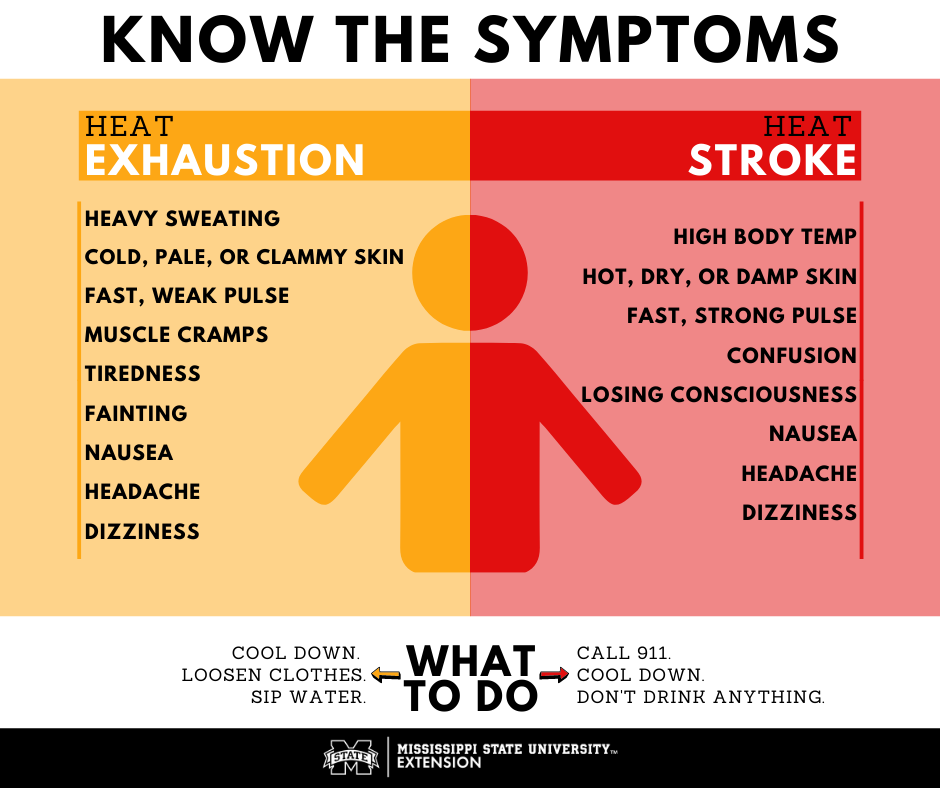
Signs of heat exhaustion include sweating profusely, muscle cramps, dizziness, headache, and nausea.
A person experiencing heat exhaustion should be moved to a cool place, cooled down, and given water.
Heat stroke also includes dizziness and headache, but the person isn’t sweating, has a high body temperature, and has red and hot skin.
If this happens, 911 should be called immediately, and the person should be cooled down but must not be given anything to drink.
Invest in Cooling Tech
There’s only so much you can do in terms of prevention, so you should also actively seek to make the heat as tolerable as possible for your workers.
One thing you can do is purchase cooling equipment for individuals.
This special equipment will provide hours of cooling to workers by employing different methods to reduce their body temperature.
One example is a cooling vest.
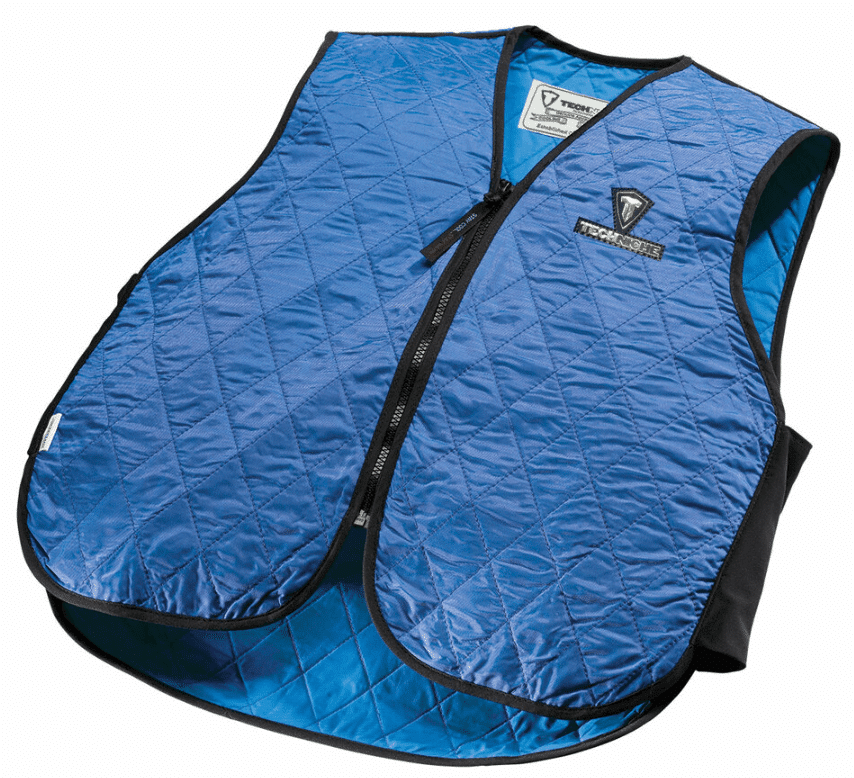
The unique material used for their production can provide 4–10 hours of cooling after soaking them in water to activate.
What’s more, they are high-visibility, ensuring that your employees stay safe on the site.
The same cooling technology is also used for pants, neck shades, cooling towels, durags, or other cooling gadgets.
Apart from individual gadgets, equipment such as a misting tent can cater to more people and provide shade for employees to rest during breaks.
The mist will also provide much-needed refreshment at regular intervals.

It can be set up in minutes, and the cooling mist can lower the temperature by up to 30°F.
If you’re looking for a closed option, controlled room temperature booths are a good solution.
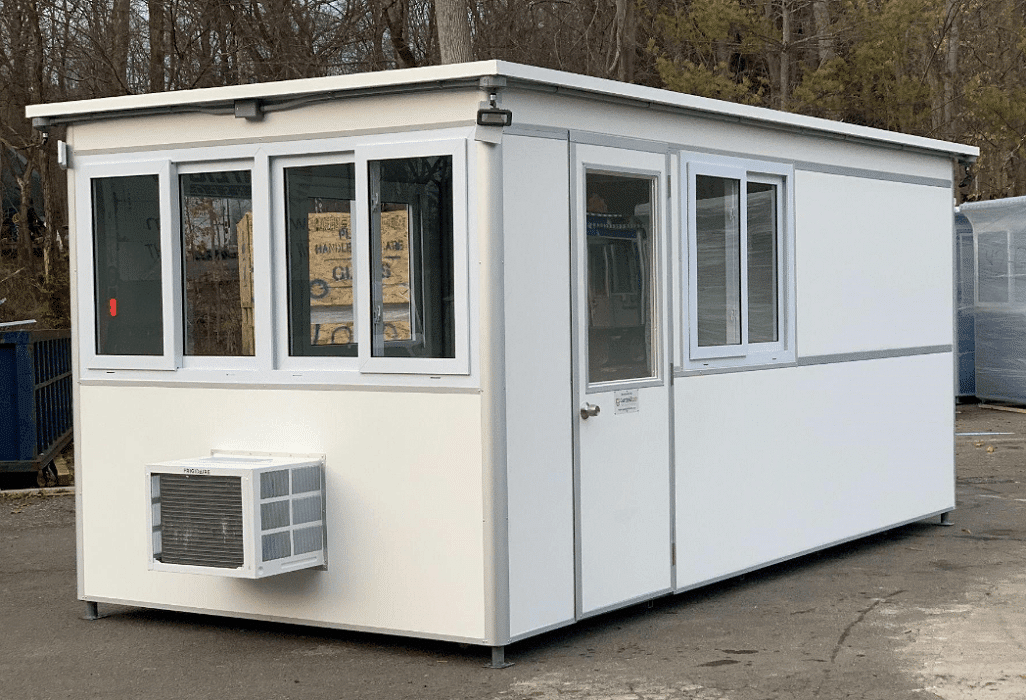
They’re modular, come in different sizes, and are easy to install and transport.
As they’re closed, you can also use them to store cold beverages or other cooling equipment for your team.
Adjust the Shifts
Getting an early start is a practical way to combat the heat. Some industries, such as agriculture, adopted it a long time ago, while others are reluctant to do it.
Whichever team you’re on, one study has shown that we might soon be forced to start work 3 hours earlier than is currently done to offset the negative effect of the climate crisis on labor productivity.
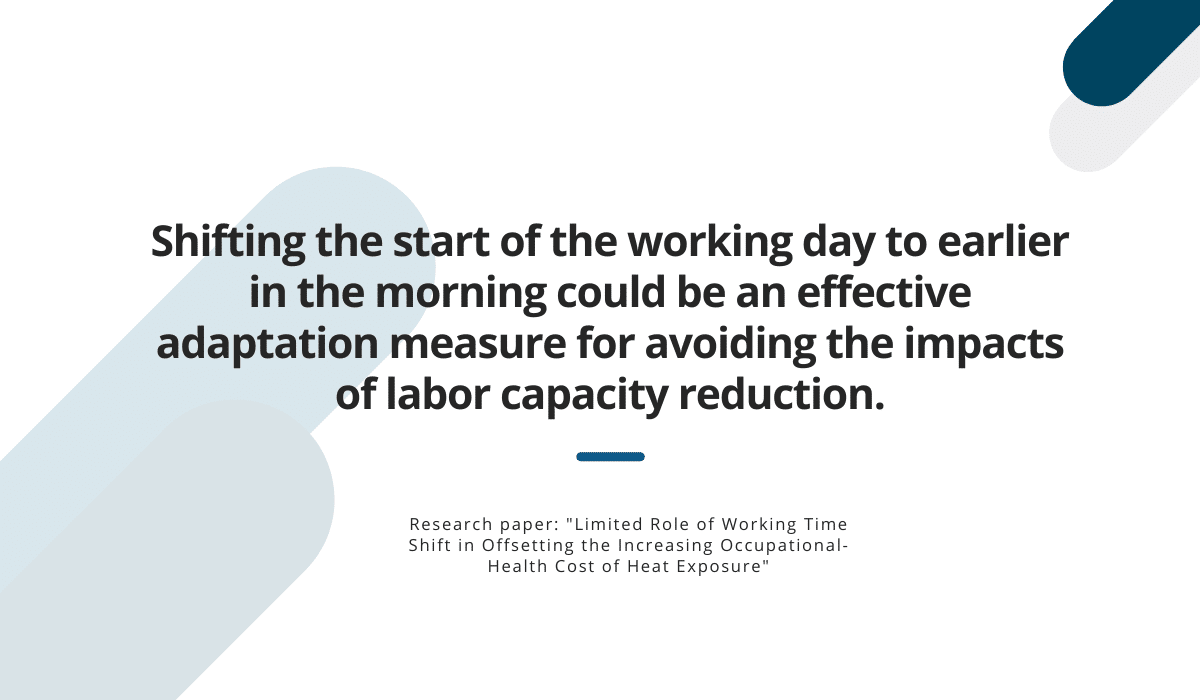
Not everyone will be happy about getting up early, but if you properly explain heat-related risks to them, they should accept it. After all, avoiding exposure to heat benefits them the most.
If the job requires a combination of outdoor and indoor work, you can schedule the outdoor part for the early morning and then have employees work inside during the hottest part of the day, between 1 PM and 3 PM.
Another variation is to leave all the work that needs to be done inside for the hottest days and work on-site on milder days.
If neither of these works for your company, night work is also an option.
A construction company from Phoenix prefers the graveyard shift for two reasons: concrete is more manageable at lower temperatures, and there’s no risk of metal parts burning you when they become too hot in the sun.
Another critical factor in choosing night work is the traffic. There is less traffic at night, which means fewer disruptions to your work.
In addition, when transporting materials and components, you will be able to close off only one lane if needed, which will cost less than closing off multiple lanes.
Educate Employees About Proper Summer Clothing
Most workers will probably tell you that the best way to beat the heat is to keep on as few pieces of clothing as possible.
However, Safeopedia warns that leaving too much skin exposed to the sun only means that the skin absorbs more heat and harmful UV rays.
So, what should they wear?
Long trousers and shirts with long sleeves, preferably light-colored so as not to absorb the sun. The clothes should be loose-fitting to give the skin room to breathe.
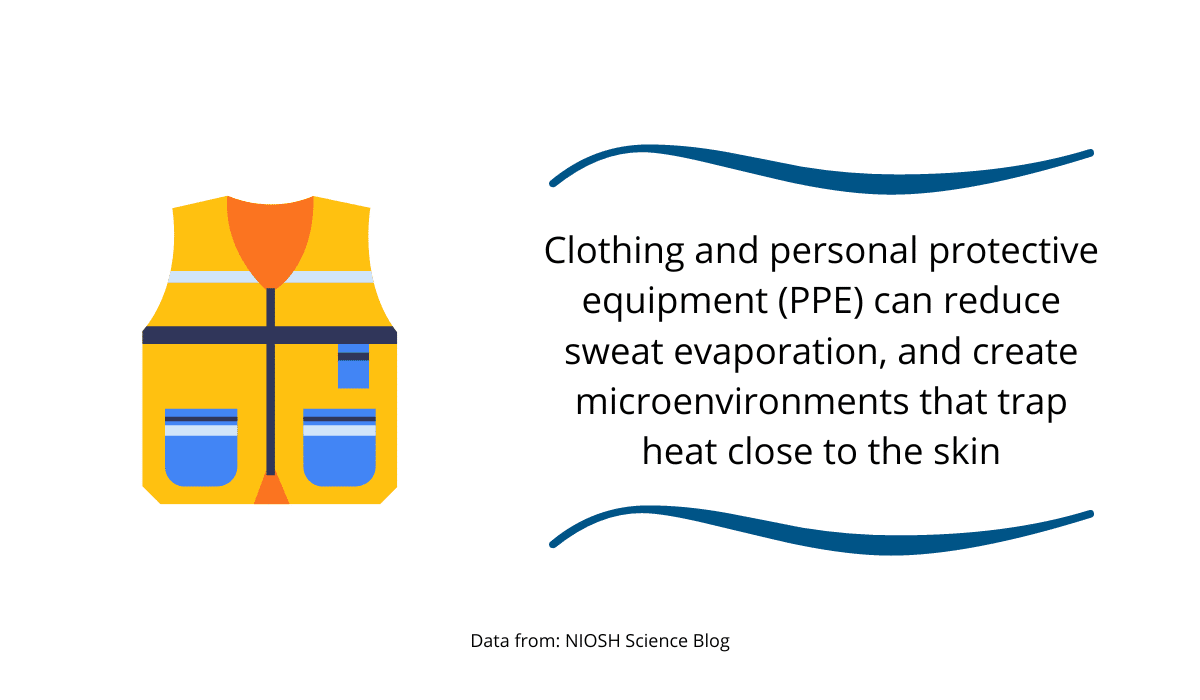
The tricky part is choosing the material. While natural materials, such as cotton, have traditionally been recommended, they might not be the best option for people engaged in strenuous activity in hot, humid environments.
When it’s hot and humid, natural materials absorb the sweat, making clothes stick to the body and causing discomfort.
Moisture-wicking fabric might be a more comfortable choice.
Unlike cotton, which can absorb 7% of its weight in water, polyester in the wicking material absorbs only 0.4%.
It will carry moisture away from the body so it can evaporate quickly on the outside of the fabric, leaving workers dry but allowing their skin to breathe.
Nevertheless, according to the NIOSH Science Blog, the jury is still out on whether synthetic fabrics are better than natural in preventing heat-related illnesses.
More research is needed to establish whether a particular fabric type can reduce heat stress.
For now, it’s a matter of comfort and personal preference, so you can encourage your workers to wear what feels best.
Keep Water Everywhere
Water is vital for our functioning because it transports oxygen to muscles, helps regulate body temperature, and improves blood and oxygen flow to the brain.
It’s no wonder then that losing just 2% of your body weight in fluid means that your physical performance begins to decline, while over 20% leads to death, as reported by Otsuka Pharmaceutical.
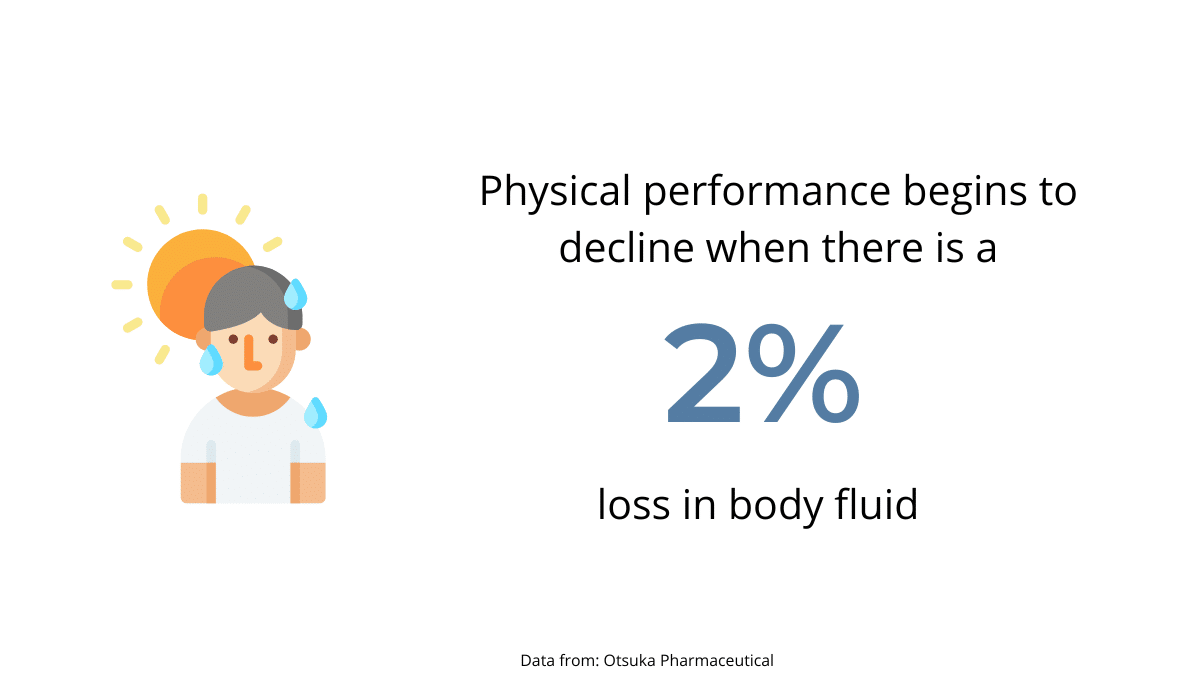
This is why staying constantly hydrated is essential for workers to be productive and prevent dehydration, which is the leading cause of heat stress.
In addition to having a central water station, you should encourage workers to keep a bottle on them at all times.
Metal thermos flasks can keep beverages cool for 24 hours, making them a good choice for hot days.
The recommendation is to drink water before feeling thirsty, as thirst indicates that you’re already slightly dehydrated.
This is especially true for workers engaging in hard labor as they lose body fluid fast.
Workers should be encouraged to drink 8 oz of water (1 cup) every 15 minutes.
Seeing that it’s difficult for them to keep track of time on the site, it’s a good idea to set a reminder to hydrate at regular intervals.
Even though they might be tempted to drink coffee to stay focused, this is not a good idea as caffeine, and alcohol in particular, additionally dehydrate your body.
Cool water is preferred, or an occasional sip of coconut water and low-sugar energy drinks.
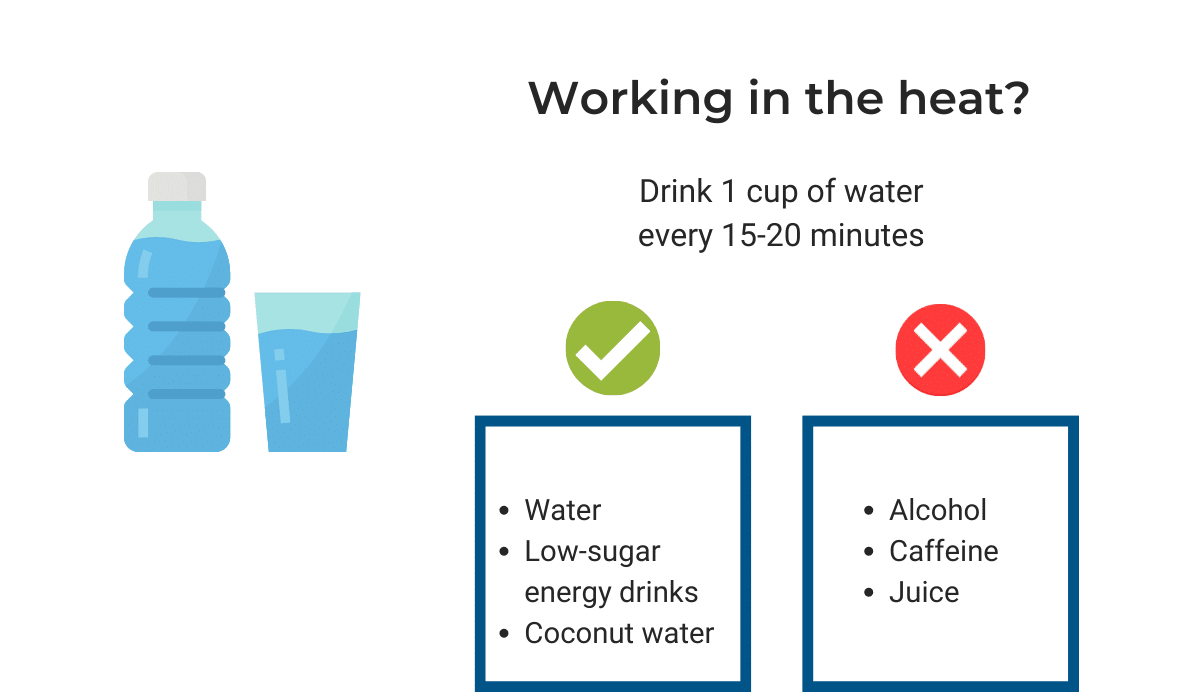
Electrolyte replenishing freezer pops are another excellent option if you have a cooler on site. They will provide refreshment to workers and give them the electrolytes they need.
Ensure Plenty of Shade on the Jobsite
A study on the relationship between occupational sun exposure and non-melanoma skin cancer has found a correlation between people working outdoors and squamous cell carcinoma of the skin: outdoor workers are 1.7 times more likely to get it.
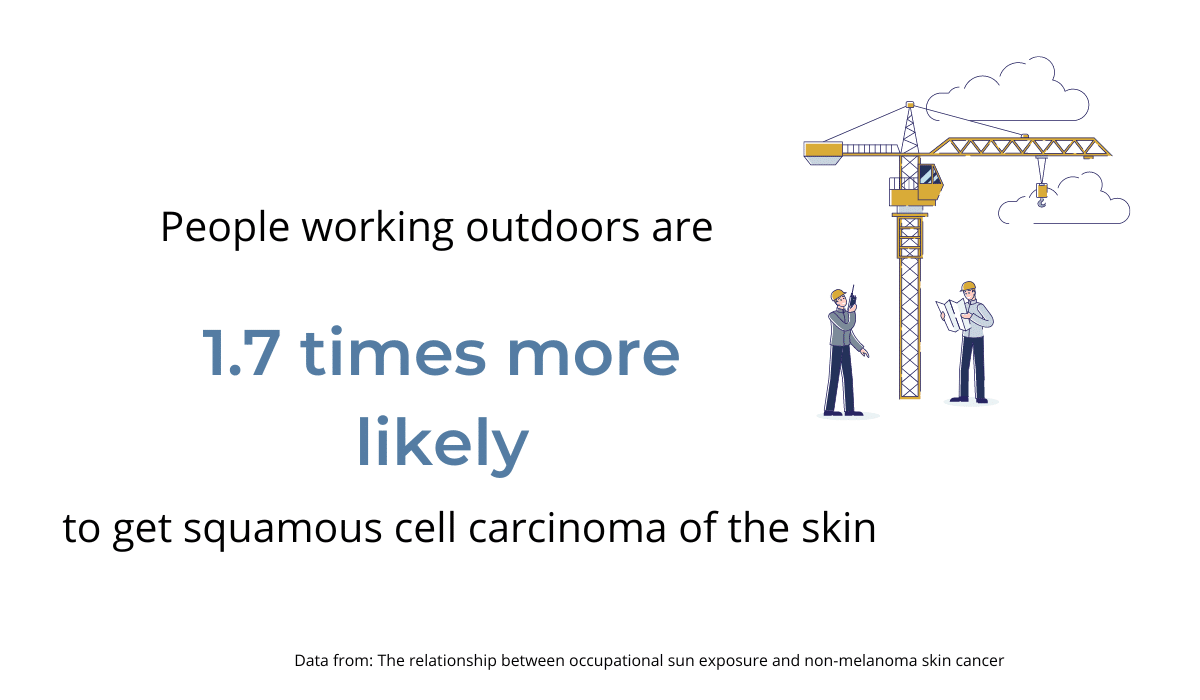
Consequently, good managers should do everything to protect their workers from the harmful effects of UV radiation.
You should provide quality shade if your construction site is exposed to direct sunshine.
Pop-up tents are a simple shading solution. They’re lightweight and easy to transport, so you can move them as needed.
They offer UV protection, and the sidewalls are an added bonus for protecting your crew even when sun rays hit at different angles.
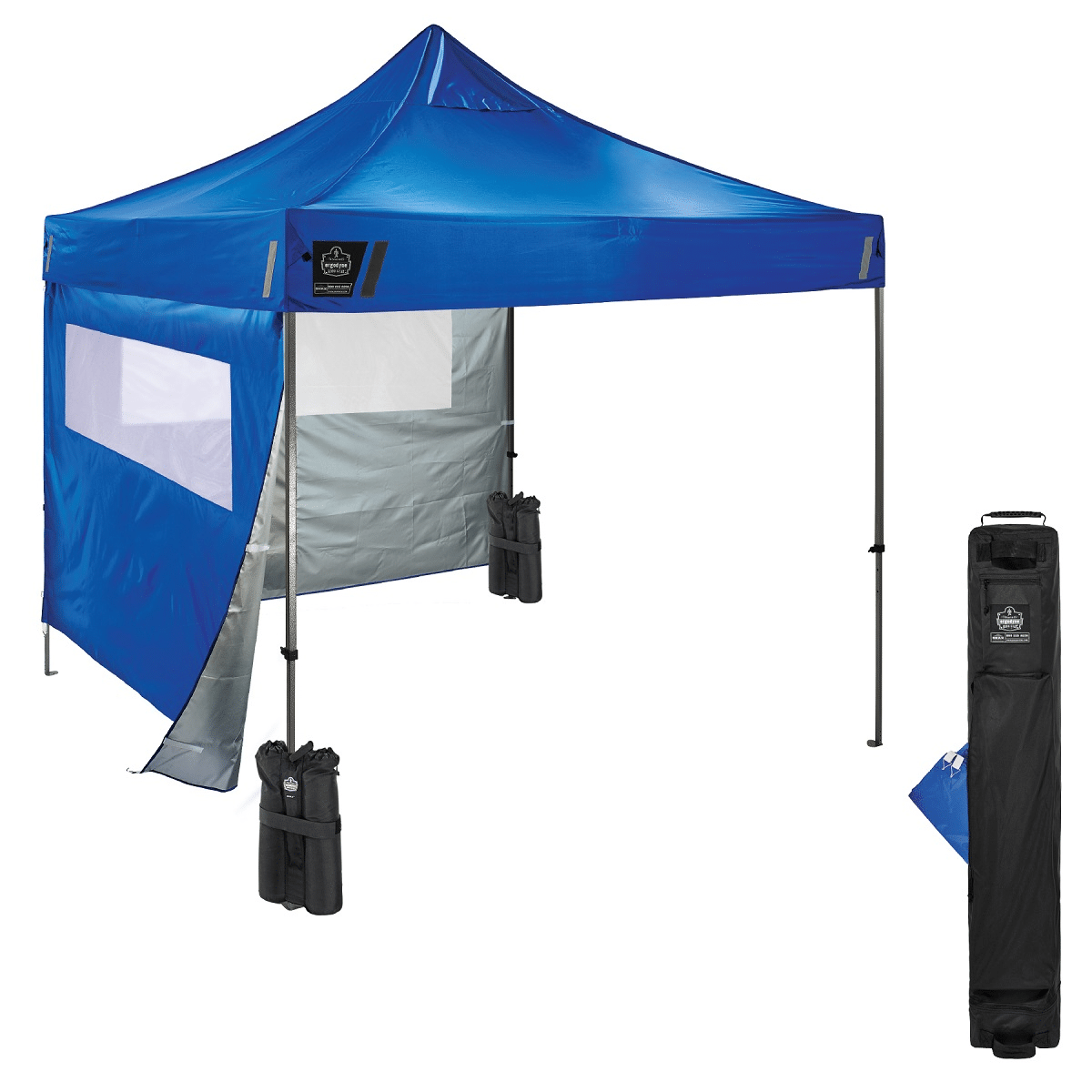
Your workers also need protection when mixing materials or doing other individual tasks for which bulky tents can’t be used.
A good option is an industrial umbrella that comes with a tripod stand or can be mounted on other equipment.
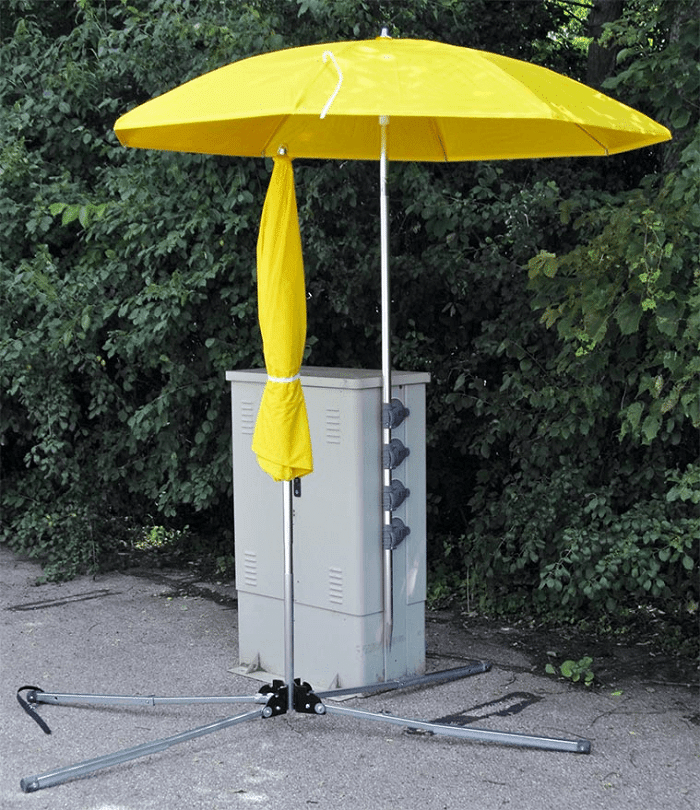
They’re convenient because workers can use them while working or even mount them on their trucks when they want to rest.
Conclusion
The amount of time your workers spend in the sun matters now more than ever, as sun exposure is becoming increasingly dangerous due to climate change.
Heat stress is no joke, and you should do everything you can to prevent it.
Therefore, educate your workers on its dangers and the importance of recognizing the symptoms of common heat-related conditions, such as heat stroke and heat exhaustion.
Apart from education, you should invest in cooling equipment, instruct workers on how to choose proper clothes, and ensure that there is enough shade.
Last but not least, don’t ignore the power of a simple bottle of water to help workers stay hydrated and focused on the task at hand.
